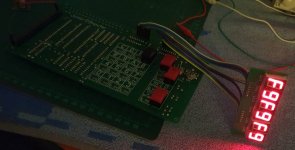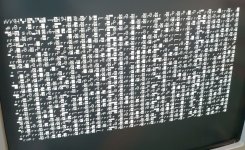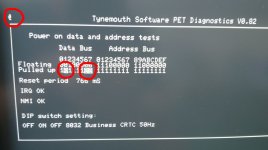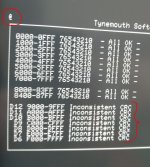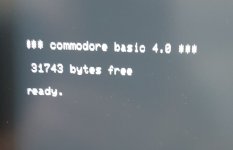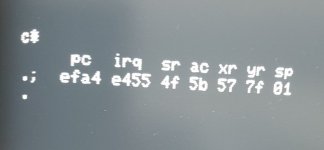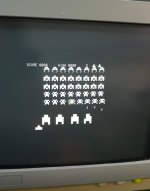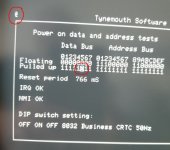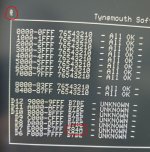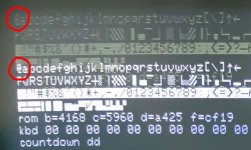This machine is the 5th in a batch of 5 faulty 8032 boards I'm slowly making my way through with lots of help from this forum and - especially - the Daves. 
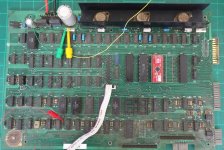
Turning it on gave no display. Did hear a very garbled startup tone though. Supply, reset and clock all looks fine.
- The CRTC did not give any sync outputs, so replaced the CRTC and then got H and V-sync on the outputs of the CRTC but still no picture.
- This was caused by the V-Sync level on the video connector sitting at about 1V, even though the input to the XOR is a nice 5V 50Hz. Assumed it's the XOR failing, so replaced the 7486 but the output was still being pulled low by something.
- The only real place V-Sync goes is to the two IRQ inputs on the VIA and Keyboard PIA, so took a guess and lifted the VIA from this signal. This restored the V-Sync to TTL levels and I now get a (very garbled) picture. Removed the VIA completely at this point.
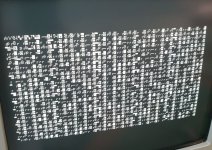
Watching the screen, I can see the startup prompt is printed (it's just a complete mess) so the machine is at least booting (with a RAM/ROM replacement card in place.). The Tynemouth PET Diagnostics also print to the screen (again, just super messy).
Would this output indicate something more fundamental than just faulty VRAM? (I did replace the Character ROM with same results.)

Turning it on gave no display. Did hear a very garbled startup tone though. Supply, reset and clock all looks fine.
- The CRTC did not give any sync outputs, so replaced the CRTC and then got H and V-sync on the outputs of the CRTC but still no picture.
- This was caused by the V-Sync level on the video connector sitting at about 1V, even though the input to the XOR is a nice 5V 50Hz. Assumed it's the XOR failing, so replaced the 7486 but the output was still being pulled low by something.
- The only real place V-Sync goes is to the two IRQ inputs on the VIA and Keyboard PIA, so took a guess and lifted the VIA from this signal. This restored the V-Sync to TTL levels and I now get a (very garbled) picture. Removed the VIA completely at this point.

Watching the screen, I can see the startup prompt is printed (it's just a complete mess) so the machine is at least booting (with a RAM/ROM replacement card in place.). The Tynemouth PET Diagnostics also print to the screen (again, just super messy).
Would this output indicate something more fundamental than just faulty VRAM? (I did replace the Character ROM with same results.)

